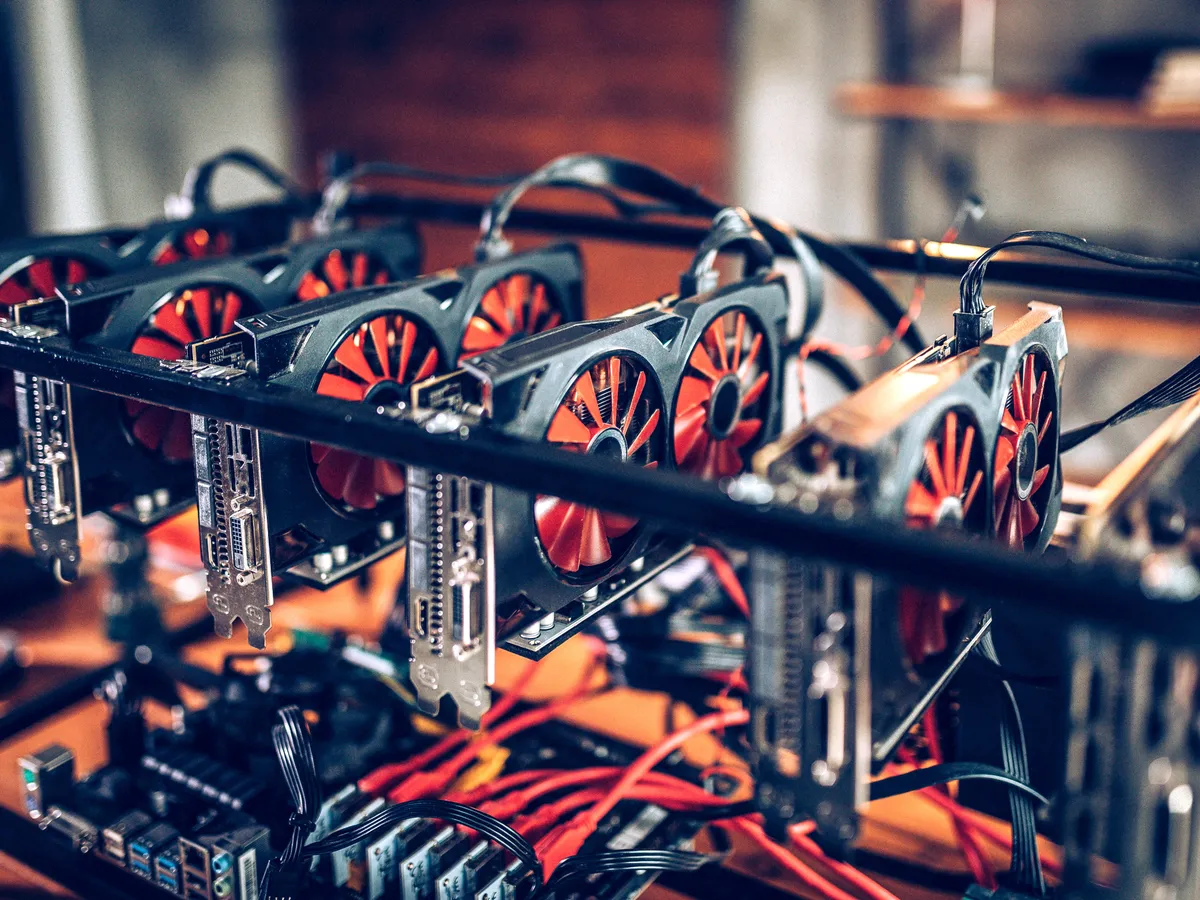How to Build a Cryptocurrency Mining Rig in 2025
Building a cryptocurrency mining rig in 2025 requires careful planning, hardware, and software knowledge, and a solid grasp of profitability factors. As the cryptocurrency landscape evolves, miners face opportunities and challenges, making thoughtful decisions essential for success. This guide walks you through the steps, hardware choices, and tips for setting up a mining rig for Bitcoin, altcoins, or other cryptocurrencies.
Step 1: Choose Your Cryptocurrency
The first step in building your rig is selecting which cryptocurrency to mine. This decision determines the hardware, software, and potential profitability.
Bitcoin (BTC) Mining
Bitcoin mining requires ASICs (Application-Specific Integrated Circuits), such as the Bitmain Antminer series.
- Pros: High efficiency and performance.
- Cons: High initial costs, energy consumption, and cooling needs.
- Joining a mining pool can help share resources and earnings.
Ethereum (ETH) and Altcoin Mining
With Ethereum’s shift to Proof of Stake (PoS), mining Ethereum is no longer viable. However, altcoins like Ravencoin still use Proof of Work (PoW) and are suitable for GPU mining.
- Advantages: Flexibility to switch between altcoins based on profitability.
- Hardware: Mid-range GPUs are sufficient for mining altcoins.
Monero (XMR) and CPU Mining
Monero supports private transactions and uses the RandomX algorithm, enabling CPU mining.
- Ideal for Beginners: Less expensive and easier to start.
- Key Requirement: A good CPU with efficient cooling and optimized software.
Pro Tip: Use online calculators like WhatToMine to compare potential earnings for various cryptocurrencies based on your hardware and electricity costs.
Step 2: Plan Your Budget and Choose Components
The cost of building a mining rig depends on your budget and mining goals. Below are component recommendations based on different budgets:
Low Budget ($500–$1,500)
This option is ideal for beginners experimenting with mining.
- GPU: Nvidia GTX 1660 Super or AMD Radeon RX 570.
- CPU: Intel Pentium G4560 or AMD Ryzen 3 1200.
- Motherboard: ASRock H81 Pro BTC (supports multiple GPUs).
- RAM: 4GB–6GB DDR4.
- Storage: 120GB SSD.
- PSU: 600W PSU (Corsair or EVGA).
- Cooling: Basic air cooling with extra fans.
Mid-Range Budget ($1,500–$3,000)
For more serious miners seeking better performance.
- GPU: Nvidia RTX 3060 Ti or AMD Radeon RX 6700 XT.
- CPU: Intel Core i5 or AMD Ryzen 5.
- Motherboard: Asus ROG Strix B450-F Gaming.
- RAM: 8GB DDR4.
- Storage: 240GB SSD.
- PSU: 850W PSU.
- Cooling: Advanced air or basic liquid cooling.
High Budget ($3,000+)
Professional-grade rigs offer maximum performance and profitability.
- GPU: Nvidia RTX 3080 or AMD Radeon RX 6800 XT.
- CPU: Intel Core i7 or AMD Ryzen 7.
- Motherboard: Asus Z490-A Pro.
- RAM: 16GB DDR4.
- Storage: 500GB SSD or more.
- PSU: Multiple 1,000W+ PSUs.
- Cooling: Custom water cooling for GPUs and CPUs.
Step 3: Choose the Right Mining Software
Mining software connects your hardware to the blockchain network, enabling you to solve cryptographic puzzles and earn rewards.
Factors to Consider
- Hardware Compatibility: Ensure the software works with your GPUs, CPUs, or ASICs.
- Cryptocurrency Support: Choose software tailored to the cryptocurrency you’re mining.
- User Interface: Beginners may prefer GUI-based software like NiceHash, while advanced users might choose command-line tools like CGMiner.
- Optimization Features: Look for tools offering overclocking, fan control, and power management.
- Security: Opt for trusted software with regular updates to avoid malware.
- Mining Pool Compatibility: Verify that the software supports your chosen mining pool.
Popular Mining Software Options
- CGMiner: A flexible option for GPUs, CPUs, and ASICs; better for experienced users.
- NiceHash: Beginner-friendly, offering a simple setup and automated processes.
- XMRig: Popular for mining Monero and other RandomX-compatible cryptocurrencies.
- PhoenixMiner: An efficient Ethereum miner that supports both Nvidia and AMD GPUs.
- Gminer: A stable and feature-rich option for mining altcoins.
- BFGMiner: Advanced ASIC and FPGA mining features are outdated for modern standards.
- Voskcoin: Generate daily passive income with our crypto mining solution, backed by real ASIC miners at the VoskCoin mining farm
Tip: Test different software to determine which provides the best performance and ease of use for your setup.
Final Tips for Success
- Optimize Performance:
- Experiment with overclocking and undervolting to balance performance and energy efficiency.
- Use tools like MSI Afterburner to fine-tune GPU settings.
- Monitor Your Rig:
- Keep an eye on temperatures, hash rates, and power usage.
- Invest in software that provides real-time performance tracking.
- Stay Updated:
- The cryptocurrency market is volatile. Monitor trends, adjust strategies, and stay informed about mining difficulties and coin values.
- Join Communities:
- Engage with forums like Reddit’s r/EtherMining or specialized mining groups for tips and updates.
Cheap Remote Crypto Mining for you – Click Here
Conclusion
Cryptocurrency mining in 2025 offers opportunities for both hobbyists and professionals. By selecting the right components, software, and cryptocurrency, you can build a rig that aligns with your goals and maximizes profits. While the mining landscape continues to evolve, staying adaptable and informed will be key to long-term success.


